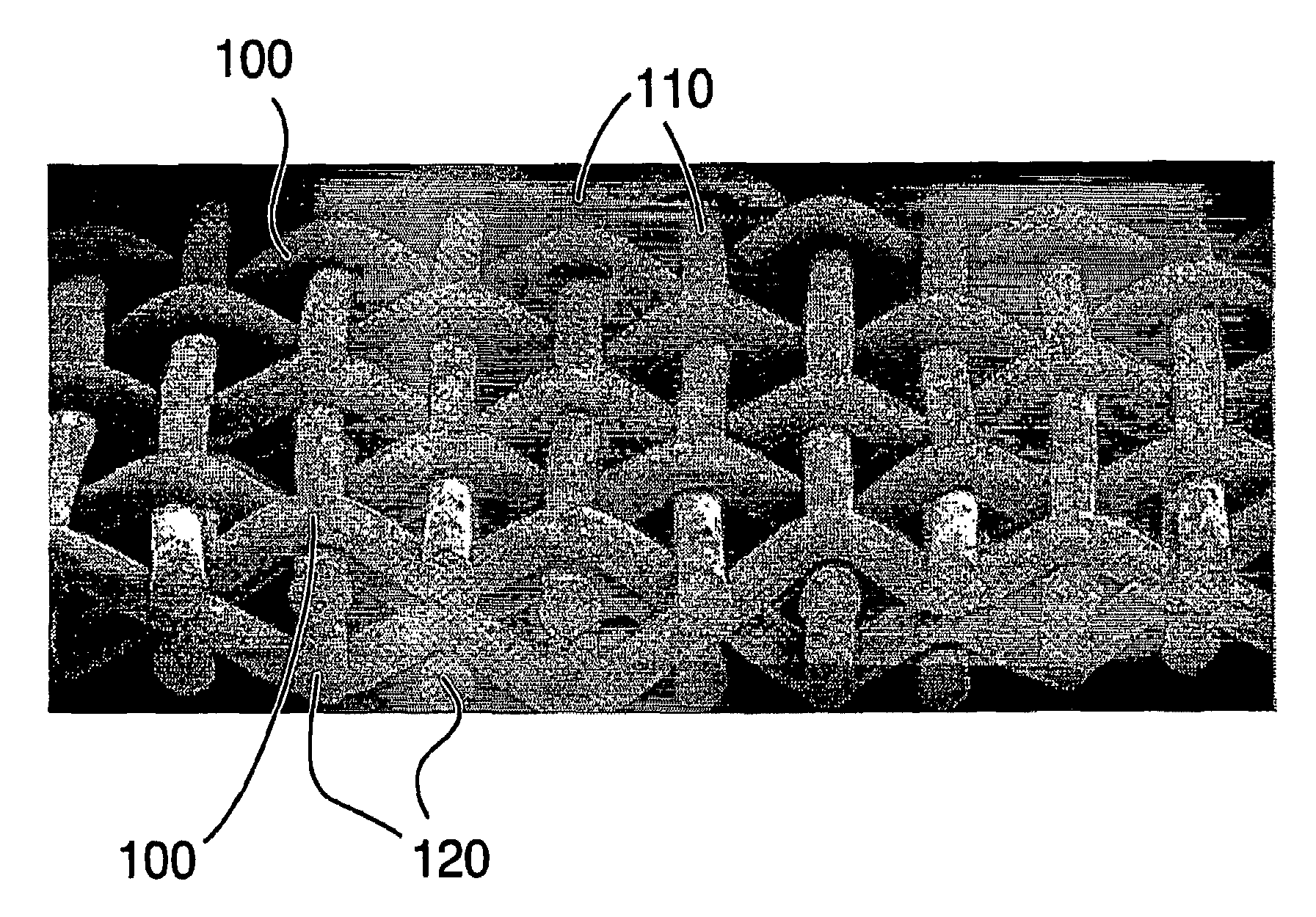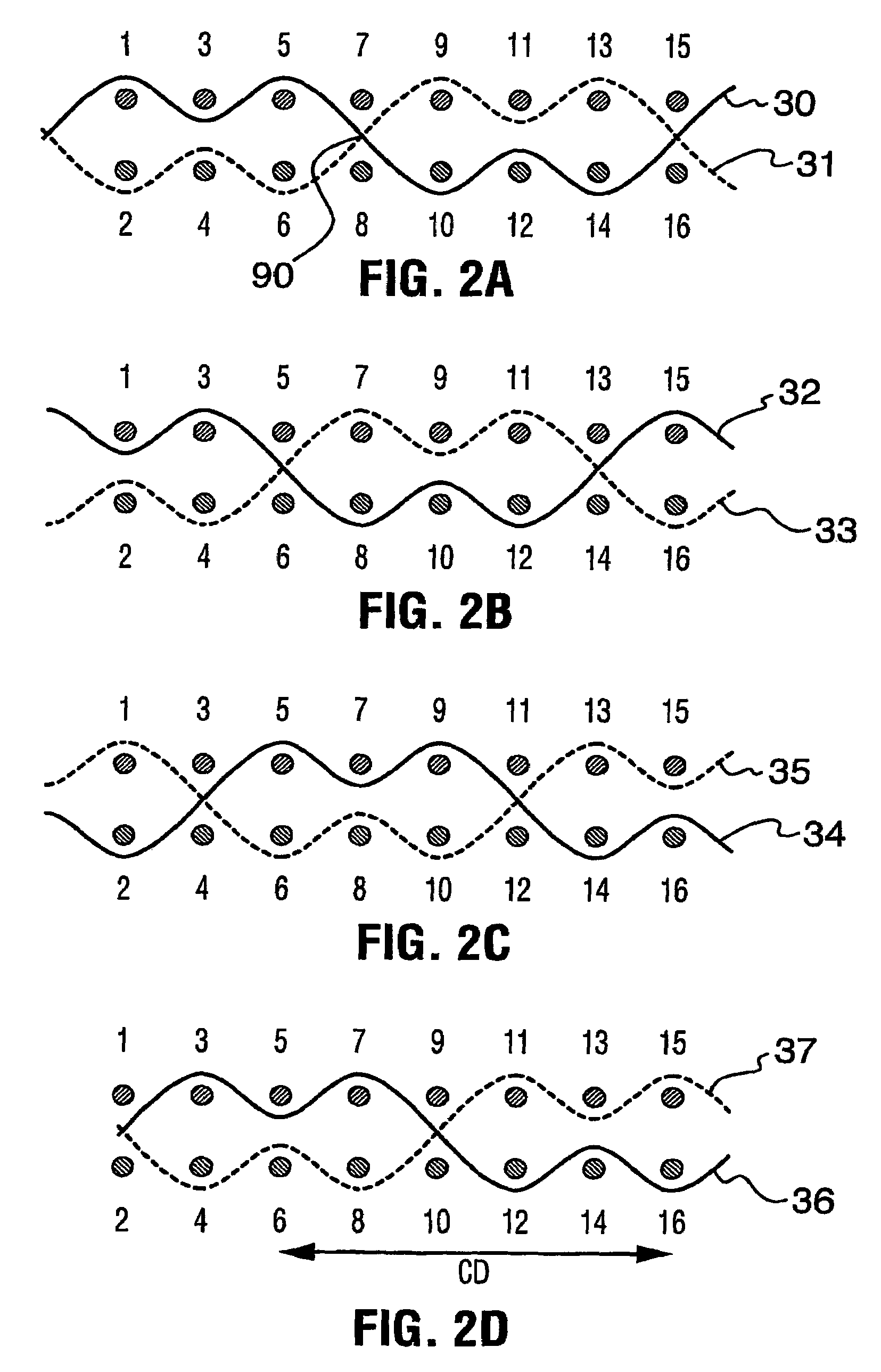Triple layer industrial fabric for through-air drying process
a technology of industrial fabric and through-air drying, which is applied in the field of triple-layer industrial fabric for through-air drying process, can solve the problems of reducing the production efficiency of industrial fabrics, so as to achieve adequate dimensional stability, stretch resistance and seam strength, and high projected open area
- Summary
- Abstract
- Description
- Claims
- Application Information
AI Technical Summary
Benefits of technology
Problems solved by technology
Method used
Image
Examples
first embodiment
[0029]FIG. 1 is a photographic isometric view of the invention;
[0030]FIGS. 2A to 2D show the paths in the CD of four successive weft yarn pairs of the embodiment of FIG. 1;
[0031]FIG. 3 shows the path in the MD of one stacked pair of warp yarns of the embodiment of FIG. 1;
[0032]FIG. 4 is a weave diagram showing one repeat of the weave pattern of the embodiment of FIG. 1; and
fourth embodiment
[0033]FIGS. 5A to 5C show respectively the paths of one weft yarn pair of a second, third and fourth embodiment of the invention.
[0034]Referring to FIG. 1, it can be seen that the fabric of this embodiment is woven to a plain weave design in each of the PS layer 70 and the MS layer 80, to which each member of each pair of weft yarns, identified by the generic reference numeral 100, contributes. In each embodiment, the paths of each member of each pair of weft yarns 100 in each repeat comprise two portions, so that each member alternates between the PS layer 70 and the MS layer 80, and so that between the first and second portions of the repeat, the first and second members of the pair of weft yarns 100 exchange positions at an exchange point 90. In the first portion, the first member is exposed over a preselected number N1 of PS warp yarns identified by the generic reference numeral 110, while the second member is exposed over a preselected number N2 of MS warp yarns identified by t...
PUM
| Property | Measurement | Unit |
|---|---|---|
| width | aaaaa | aaaaa |
| width | aaaaa | aaaaa |
| sizes | aaaaa | aaaaa |
Abstract
Description
Claims
Application Information
 Login to View More
Login to View More - R&D
- Intellectual Property
- Life Sciences
- Materials
- Tech Scout
- Unparalleled Data Quality
- Higher Quality Content
- 60% Fewer Hallucinations
Browse by: Latest US Patents, China's latest patents, Technical Efficacy Thesaurus, Application Domain, Technology Topic, Popular Technical Reports.
© 2025 PatSnap. All rights reserved.Legal|Privacy policy|Modern Slavery Act Transparency Statement|Sitemap|About US| Contact US: help@patsnap.com



